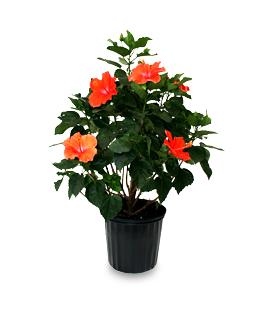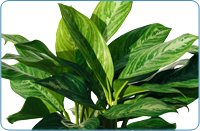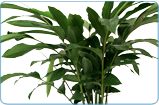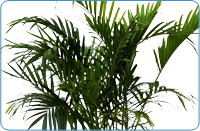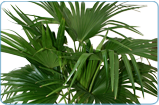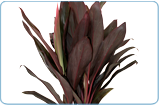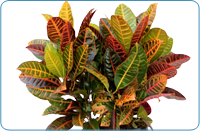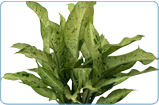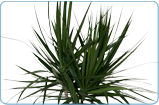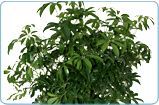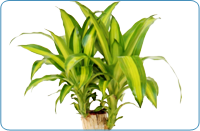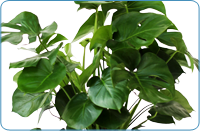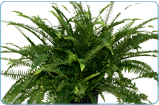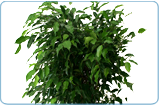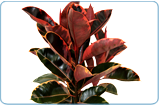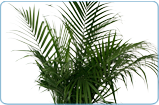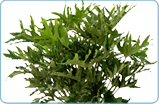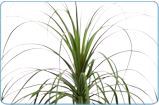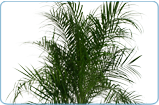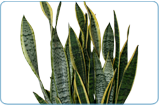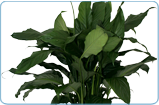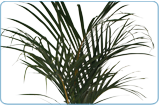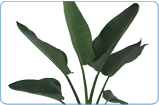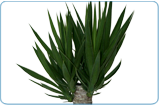Pink Hibiscus Mealy Bugs:
The majority of the Mealy bug family is white, waxy creatures that live in large colonies usually on the undersides of the leaves and/or around leaf
joints. The main difference with a Pink Mealy bug, is just that, its color. Just like all mealy bugs, the pink mealy bug is roughly 3mm in length. Though
this insect bears the name of the hibiscus it doesn’t only attack hibiscus plants, it will infest any ornamental plant, so the first course of
action should be to remove the infested plant from any of the other plants within your home. After that either take a water bottle to spray the affected
area to wash off the bugs, or wipe off the infestation with cotton buds dipped in rubbing alcohol. Take note that this may not work to get rid of all the
Mealybugs at one time, so keep the plant away from others while you monitor it for more insects. Another option is to buy the Mealy Bugs natural predator
called the Mealybug destroyer (Cryptolaemus montrouzieri) which is a species of lady bug. This is an option for heavily infested plants, if you do not want
to dispose of the plant for some reason. Once the Mealybugs have been killed and consumed the Mealybug destroyer will die off from a lack of a food source.
Be aware however this particular breed of mealy bug is hard to destroy and the safest bet is to dispose of the infected plants.
Hibiscus Erinose Mite:
The Erinose Mite is basically invisible to the naked eye. It was introduced to America through illegal imported hibiscus cuttings (as it was into other
parts of the world) from Brazil. When looked at under a powerful magnify looking glass, the Erinose mite has a worm like appearance but with only two pairs
of legs. However this mite is so small you shouldn’t expect to find the mite itself, just the damage it is causing to the plant. The damage will be
seen clearly on the young leaves of the hibiscus. These young leaves will be extremely pimply as will the new leaf shoots (axillary buds), which is caused
by the mites injecting a compound into the tissue that makes the young green tissue expand. Best way to handle this problem is to prune the area of the
hibiscus that is affected and then spray the plant with a miticide/insecticide. Remember to dispose of the pruned clippings in a way that they will not allow
for the mites to spread to other hibiscus.
Scales:
There are many species of scales that are commonly found in indoor house or greenhouse plants. Some species of the insect can have an armored shell like
covering that will protect its entire form while others will have none at all. Those with the waxy shell can have its protection removed by simply scraping
it away. It is easiest to tell the difference as the soft scales (no armored protection) produce honeydew while the armored scales will not. Scales feed on
your plant by sucking on the plant’s sap. This will promote poor growth which will eventually stunt the growth of your plant. It can also lead to your
plant being infested to sooty mold.
The most practical thing to do for your first attempt at cleaning up your plant from its infestation is to use soap and water to wash off the leaves and
stems. If your plant is heavily infested, you can try an insecticide spray schedule on your plant that involves 2 to 3 sprays a week every two weeks. It is
usually best to discard the plant however before the infestation can spread.
Aphids:
Aphids are commonly known as the greenfly or black fly, and they are the most common pest for indoor houseplants. They are small insects (usually
1 to 5mm) and generally infest flowers, shoot tips and soft leaves. They are not likely to kill your plant but these sap-sucking insects will cause
the flowers and leaves to look very distorted and/or curled.
To treat the Aphid infestation you should first try to wash off the colonies from your plant. To do this use a strong spray bottle filled with water,
however this treatment does not work with all species of Aphids. The next method to try is with a fine spray of soapy water on the colonies. This will
interfere with their ability to breathe. If the second method fails, you will need to succumb and purchase a systemic poison or a spray containing
Malathion. We suggest Malathion because it has a relatively low human toxicity.
White Fly:
Infestation of White Fly on your plants usually becomes very apparent when you go to water your plant or disturb it in any other manner. The white fly is
a small moth like insect that is about 1/8th of an inch in length, completely white and often spotted as they fly between plants once the plant has been
disturbed. This pest is notorious for carrying diseases between plants and also releases a sticky substance that promotes mold growth as well as Sooty Mould.
The insect can often be found underneath the leaves of the plant. One of the first signs of the whitefly may be yellowing and a loss of leaves on your plant.
As this pest is airborne it won’t be as easy to spray insecticide to suffocate the White Fly. If you do choose the insecticide route, it is best to
keep up your treatment by spraying several times in four to five day intervals. Another solution is to introduce the White Fly’s natural predator into
the environment. The Encarsia Formosa (a tiny member of the wasp family) and does not sting humans. In fact they are so tiny (females are about 0.6mm long),
once released into the environment the only sign of their existence will be that your population of white flies will dwindle down to nothing. One note: Before
releasing this predator of the white fly make sure to wipe off any insecticides you might have sprayed as a first attempt to rid your plants of the pest as it
will affect the Encarsia Formosa as well.





